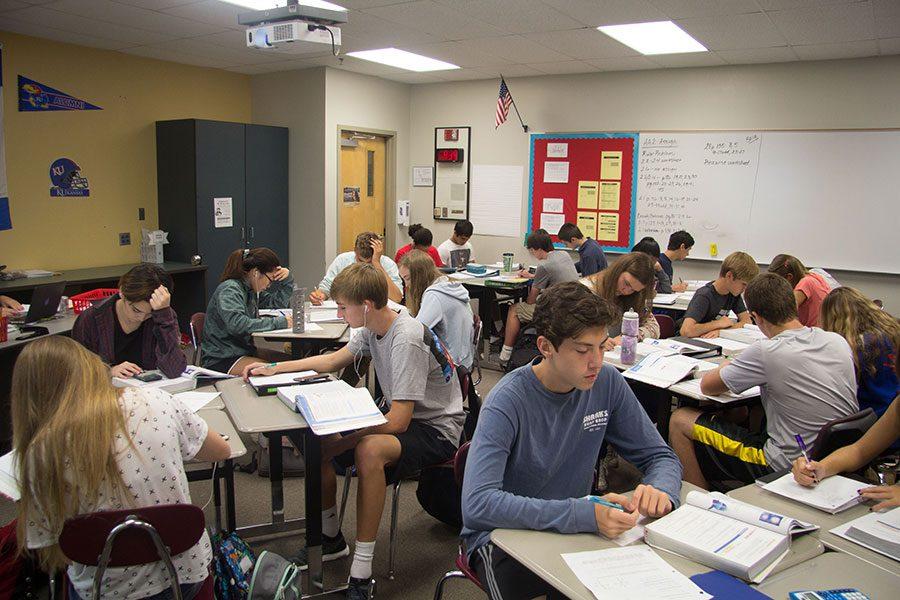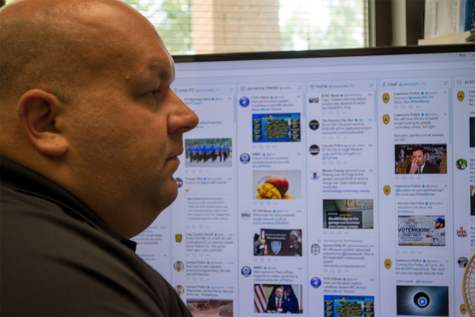Higher enrollment pressures counselors, teachers
Core classes like Kristen Diefendorf’s Math 101 are at capacity. The 2016 freshmen class was the largest the school has seen, “The ideal situations would be less students…we kinda know how some things work, we don’t always agree with the ways things been done,” Mr. Mellen spoke on the topic said.
Cramming through the walls of people, students try to get to their lockers or class before the bell rings. Juniors and seniors might notice the growing population of the other grades this year.
Counselors recognized the influx of freshmen. It has been challenging for counselors to schedule the large amount of students into their first choice of classes. Counselor Tina Mitchell clarifies that the main part of her job is to make the students happy with their schedules.
“It’s been very difficult to get kids what they want,” Mitchell said.
It has been stressful for counselors when students change their minds about what classes they want to take.
“We have to say no when they change their mind, because there’s no place for them to go,” Mitchell said.
The issue of the overcrowded classrooms is not just occurring in Free State. English teacher Andrew Martin explains how schools all over Kansas have the same issue.
“I know teachers from many different schools and districts in Kansas, and we all worry about our class sizes affecting learning outcomes,” Martin said.
The class sizes are not the only factor in the school that are being affected by the surplus of students. Teachers are concerned about what goes on after class when there is overcrowding in the commons and halls.
“I hear concerns every year about overcrowding,” Martin said. “A lack of lockers, the number of people in the halls at passing time and long lines, lack of seating choices during lunch…”
The business department is facing a struggle this year because the district had to cut two of the department’s teachers. The students who had enrolled in their classes in February now had to be moved into a different business class. Ben Mellen, one of the business teachers who remained, voiced his frustration that his department is gaining more students than he knows what to do with.
“There [are] more [students] than I think we should have, our classes aren’t really designed for that… our [business] department gained 50% more students,” Mellen said.
Long-term teachers have witnessed changes from the district before. Mellen has a first hand account of the district’s reforms, some of which he does not condone.
“It seems like there’s a decision made at a higher level that affects us directly and we don’t have a lot of input, Mellen said. “We understand our student situation a little bit better than other people.”
Mellen is especially concerned with the students who will not be excel with the limited amount of time and distractions from large class sizes. He becomes unable to teach specific students more in-depth individually.
“I’m worried about some students falling through the cracks because I don’t have enough time to work with each one of them,” Mellen said. “Especially those who need a little extra help.”
Mellen sees direct effects of an increased student population in his own classroom. With the shortage in textbooks, seats and technology, he believes that it is making it difficult to have a suitable learning environment.
“It’s a different environment, it’s a little bit more stressful,” Mellen said. “It just feels like the students and teachers get the leftovers.”
Your donation will support the student journalists of Lawrence Free State High School. Your contribution will allow us to purchase equipment and cover our annual website hosting costs.













